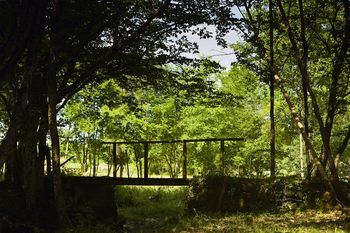History of Wooden Bridges
From the ancient times when humans first started finding ways how to bridge rivers and hard terrains, wood represented one of the most used and common materials for building bridges. At first our prehistoric ancestors used very simple techniques, like timber piles and crude woodwork to cross smaller rivers (proof of such structures date back to 1500BC).
As our manufacturing techniques and tools become more and more advanced, wooden bridges with more and more advanced designs became used all across the world. As for Europe, the earliest examples of bridges made from wood can be found in Switzerland where architects from Roman Empire created several bridges (first smaller footbridges and in 2nd century AD large 6 meters (20 feet) wide wooden bridge). Time went on, and medieval carpentry and advanced tools enabled creation of many bridges in Europe and Asia. Even though stone bridges were more common and far superior in several of their features (strength, long life, resistance to natural elements), wooden bridges always managed to stay in fashion because they also had their own advantages – they were easy to manufacture, its components were easy to move, design effort was small, it could be used for both pedestrians and vehicles, and its deck could be paved with stones or earth if designer wanted so.

One of the most famous bridge designs of medieval Europe came from the efforts of Rudolf IV, Duke of Austria, who between 1358 and 1360 created bridge across Lake Zürich that was 1450 meters long (4,760 feet) and 4 meters (20 feet) wide. This bridge remained in use for little more than 500 years, and in 2001 it was reconstructed to his old glory and open for public. Currently, the oldest wooden bridge in Europe lies across the Reuss River in the city of Lucerne in Switzerland.
Modern manufacture of wooden bridges has advanced greatly from medieval times. Various construction companies across the world can today build a small to medium wooden bridge that can accommodate both pedestrian and traffic and have a lifespan of 80 years. One very rare technique of building wooden bridge consists of using live trees and manipulation of the growth of its roots. Over the period of two decades, Indian architect molded and guided the growth of large tree roots, creating amazing bridge structures that are 100% made from natural materials (roots, rocks, dirt) and are 100% eco-friendly.

